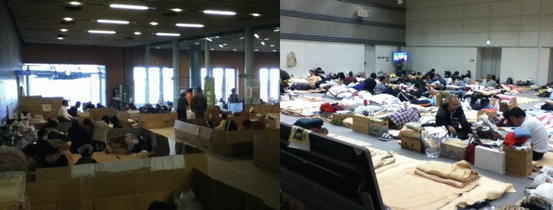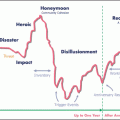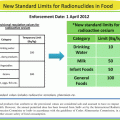Many social workers and other paramedical staff from different organizations volunteered on-site and struggled with witnessing the situation. They also realized that their support was highly inefficient because of difficulties in coordinating information among different organizations, which put the evacuees in the position of having to answer the same types of questions repeatedly. The chaos made referrals even among themselves overly complicated (Fig. 3.3).
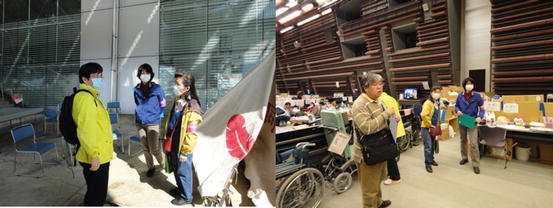

Fig. 3.3
Social workers and paramedical professionals struggled at Big Palette Fukushima (Reproduced from [10])
In early April, municipal governments began to relocate their evacuees within and out of Fukushima Prefecture. At the same time, each evacuation center began to show different types of needs. The office of Long-term Care Insurance of Fukushima Prefecture contacted the Fukushima Care Manager Association to assist the evacuees who were in need of long-term care. The Fukushima Association of Certified Social Workers, Fukushima Association of Medical Social Workers, Fukushima Physical Therapy Association, Fukushima Association of Psychiatric Social Workers, and Fukushima Association of Occupational Therapists got involved as well. Luckily, Big Palette Fukushima is located in Koriyama City in Kenchuu, where the headquarter offices of associations of both CSW and CM were at the time of the disaster, and it was also accessible for other associations. These six associations decided to approach as an interdisciplinary team to provide comprehensive, timely, and appropriate support and named themselves as the Counseling Support Professional Team (“the Team”). Each association contributed 100,000 yen, and their first collaborative action was a hazard map at Big Palette Fukushima [10, 11].
3.2.4 Post-disaster: Phase 2 – Getting Down to Business, Locally Unique Operation to Meet Needs, Prefecture-Wide Networking for Effective Support
The Team supported the evacuees by making referrals for long-term nursing care, providing information on medical care, and offering emotional support. They listened to the evacuees’ issues such as properties left behind, fears and anxiety from uncertainties, as well as living conditions and interpersonal problems at the evacuation centers. They also indirectly supported professionals and municipal workers by supporting their residents. They emphasized networking and collaboration with other organizations in order to offer effective services and utilized mailing lists for communication and exchanging the latest information.
In early May, a supplementary budget was approved by the Diet for constructing a mutual support system in the communities to assist those affected by the disaster, including support services provided by CMs, public health nurses, and other counseling professionals [12].
In late May, the Fukushima Prefecture set up a contract with the Team for “dispatching the Counseling Support Professional Team to assist seniors and other residents of temporary housing facilities affected by the disaster in Fukushima Prefecture.” All volunteer work by social workers and paramedical professionals going forward was considered an official project.
Immediately following the disaster, those whose health was deteriorating drastically became more ill because they did not receive proper care in timely fashion at the evacuation centers. Under the long-term care insurance system in Japan, nursing care requires a long-term care plan made by CMs and assessment and certification done by municipal governments. Because of the disaster and evacuation, many municipal government offices were too fragmented to function, and they were unable to respond to the urgent needs at the evacuation centers. This contract, then, temporarily allowed the Team to certify long-term care plans and provide services within a day or two.
The Team came up with the “Big Palette Fukushima Rule,” which included the following responsibilities: (1) accept new applications for long-term care insurance on behalf of municipal governments, (2) administer temporary certifying assessment, (3) submit assessment form to Office of Long-Term Care Insurance of Fukushima Prefecture via fax, (4) receive the result of the review from the office, (5) have municipal governments check the result and activate it as the official document endorsed by the office, and (6) create care plans and install services.
In addition to the activities at Big Palette Fukushima, the Team was available for other services. In order to use the Team’s support, municipal governments and other organizations placed requests for dispatch. The Team sent social workers and paramedical professionals whose expertise matched the needs. The services included needs assessment, networking professionals and other service providers, consultation with and assistance with the use of existing services, care for caregivers, and care for service providers and municipal employees. The Team made referrals to respective association’s members, and the services would be provided.
Social workers and paramedical professionals of the Team went out into the communities, identified hidden needs, and referred them to the next step by mobilizing their expertise. They also created an inventory of the issues and needs and gave it back to the local organizations so that they would be incorporated as a part of their regular services on an ongoing basis.
As customary, Fukushima Prefecture is divided into seven areas, Sousou (coastal north), Iwaki (coastal south), Kenpoku (north), Kenchuu (central), Kennan (south), Aizu (inland), and Minami-Aizu (inland south), so the Team was required to physically cover a vast area. The evacuees in each area presented different needs, and the composition of professionals varied greatly per area. In order to maximize resources, the Team agreed to remain flexible in terms of local operation, and they agreed to exchange information vigorously so that the knowledge and experience would be shared by the entire Team.
The Team’s mission was to enhance communities’ shift from survival to reconstruction by managing medical, welfare, and nursing services for the evacuees. Examples of the needs identified by the Team were significant deterioration of physical function, mental status, and cognitive capacity; needs for medical care; and other administrative assistance for adequate services. Once the individuals with needs were recognized, the area leaders of the Team connected them with professionals such as physical and occupational therapists, mental support team, CMs, public health nurses, medical social workers, certified social workers, and other municipal functionaries. When individuals agreed to utilize services, the Team assisted them by facilitating and coordinating services, such as assisting with care plans, arrangements with facilities, mental health support, and advocacy. The Team provided supportive counseling and needs assessment to assist individuals from a psychosocial perspective (Fig. 3.4).
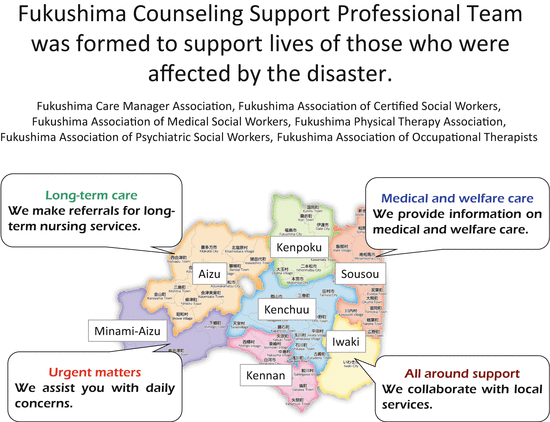

Fig. 3.4
Overview of Fukushima Counseling Support Professional Team
3.2.5 Post-disaster: Phase 3 – Beyond the Disaster, Regain Autonomy and Self-Determination
In June of 2011, there were approximately 21,900 evacuees and just under 600 evacuation centers within the Fukushima Prefecture [13]. The prefecture hoped for a smooth transition from evacuation center to temporary housing, followed by reintegration of people’s lives toward independent living. In their road map, the goal was for all evacuation centers to be closed by October of 2011. Governments built temporary housing in different parts of Fukushima Prefecture, some of which were far away from the evacuation centers. In order to supply housing facilities for the evacuees in a timely fashion, the municipal governments introduced the idea called “deemed temporary housing,” where the evacuees were able to find their own apartment and receive subsidies. Many evacuees had a hard time deciding where to move, since they were far away from their own communities, and they did not know much about the new neighborhood. Those who moved to the deemed temporary housing became dispersed and submerged in the new community but detached from their old community and isolated. The Team supported the evacuees throughout the transition by providing ongoing needs assessment, referral, and information and offering emotional support and advocacy (Fig. 3.5).
